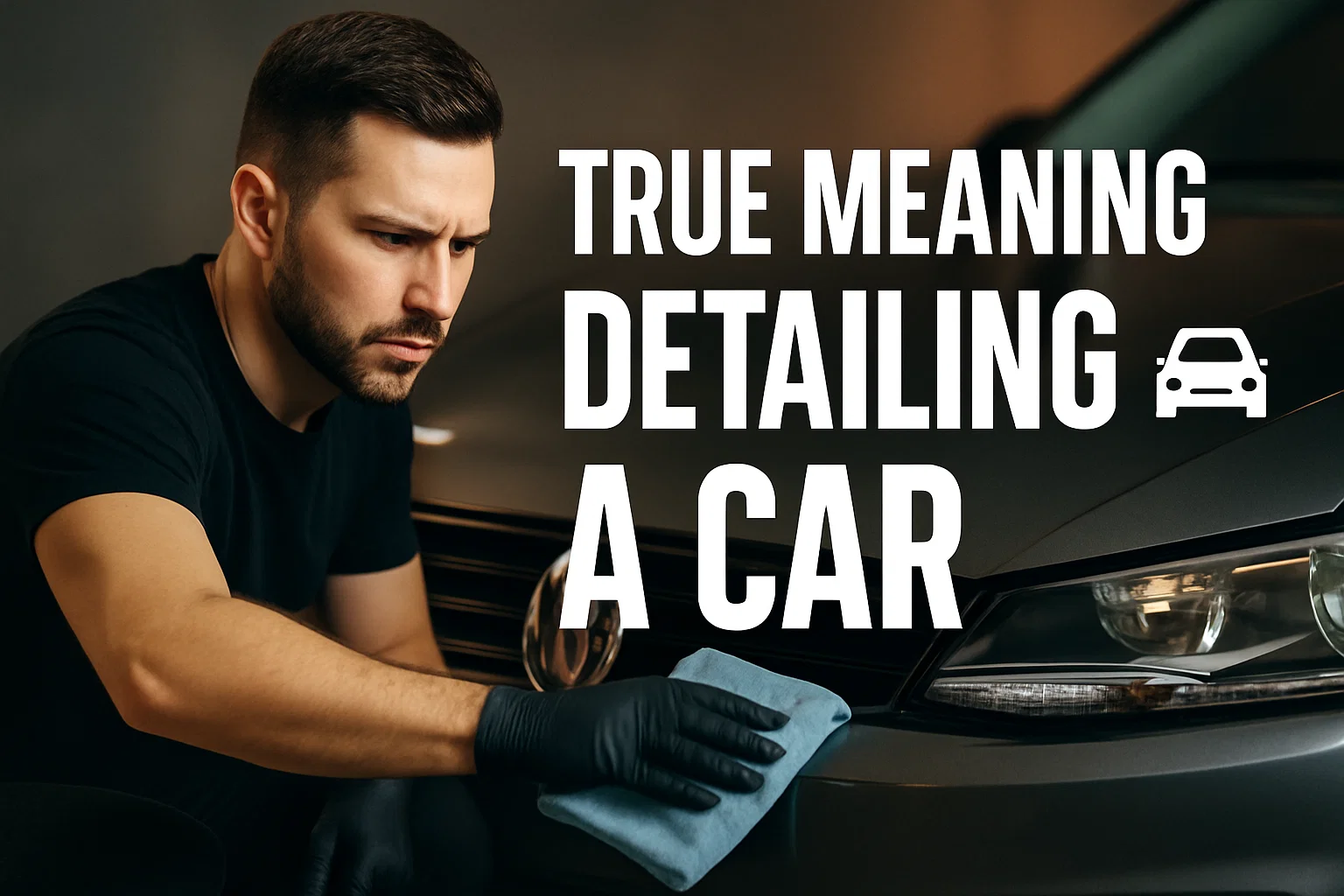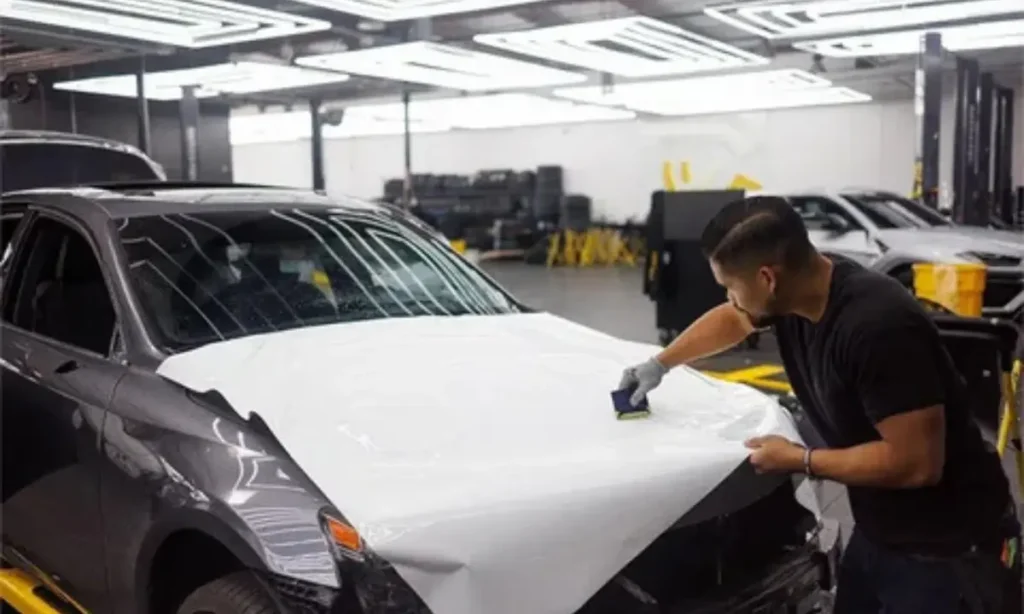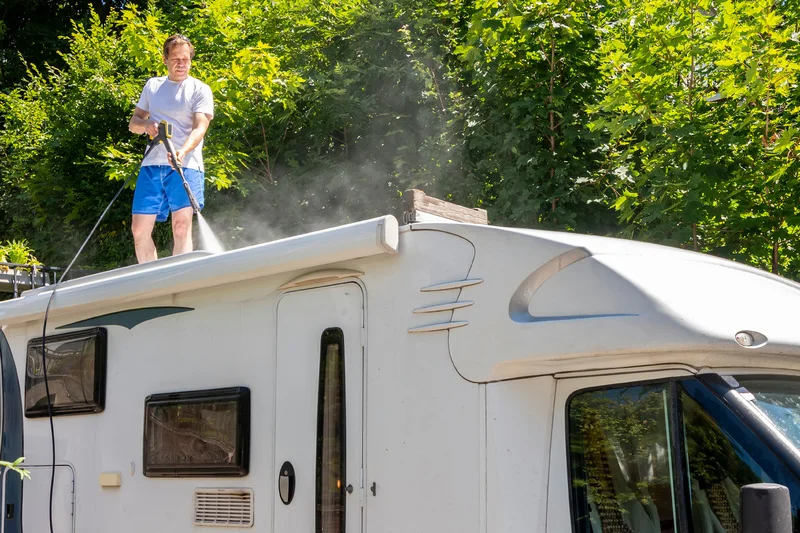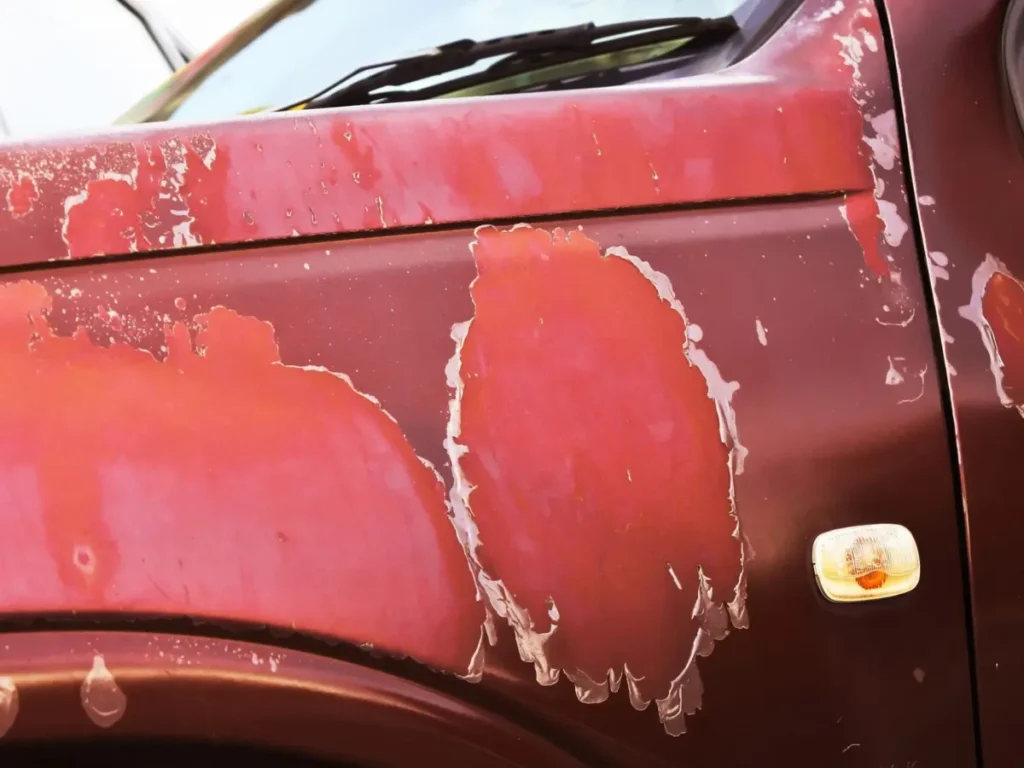What is a detail on a car? The word “detailing” is familiar to many car owners, yet most people struggle to define its meaning and application. The fundamental concept of car detailing involves restoring vehicles to a state that looks brand new. The true meaning of detailing a car extends far beyond what most people understand about it.
What Is Car Detailing?
The meaning goes beyond simple cleaning. A professional car detailing service cleans every part of the interior and exterior to enhance the overall condition of vehicles.
A basic car wash focuses on exterior dirt removal, but detailing requires comprehensive cleaning of every car area through advanced methods.
Car detailing has become a thriving business industry because people increasingly need car maintenance services. Professional detailing services have become popular because car owners now value both long-term protection and improved appearance of their vehicles.
Why Detailing Is More Than Just a Car Wash
Detail car professionals perform a comprehensive cleaning process that protects and cleans every part of your vehicle inside and out. A standard car detailing service includes the following steps.
Exterior Car Detailing
The exterior requires washing, waxing, and polishing the car surface to remove contaminants and protect the paint.
Exterior Wash:The first step involves washing the exterior with premium microfiber towels. Our waterless and rinse-less cleaning methods remove surface dirt without causing scratches while protecting the car from contaminating stormwater drains.
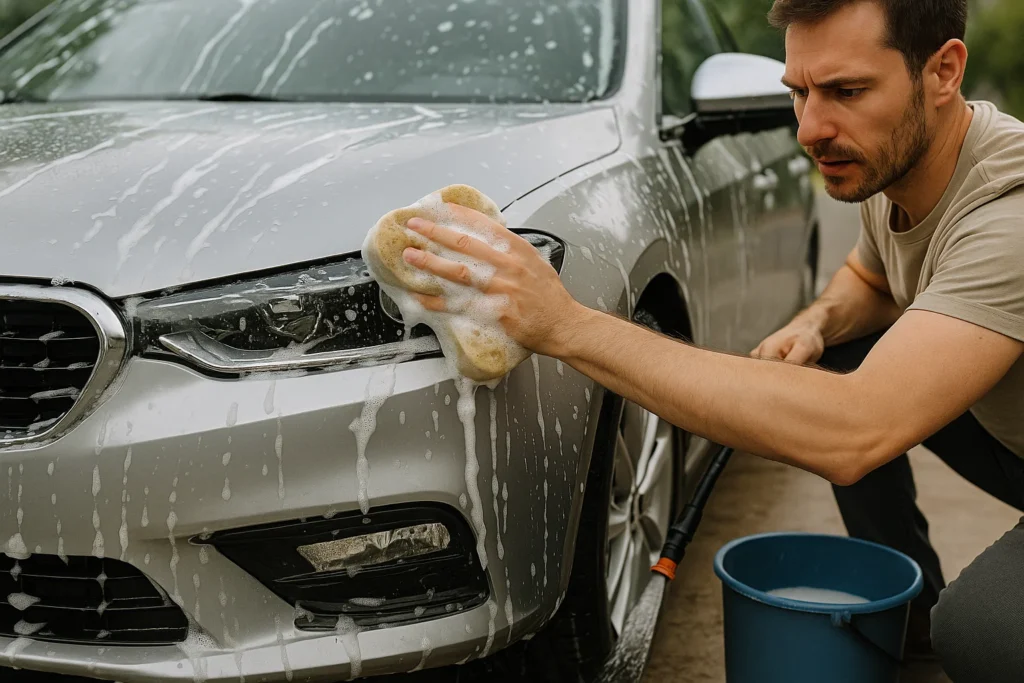
Decontamination: The car receives decontamination treatment to eliminate hidden contaminants that cannot be detected by human vision. The surface of the car becomes smooth to the touch through this procedure.
Paint Polishing: The paint of cars with light scratches and oxidation and swirl marks receives polishing treatment. The restoration process can be performed manually or through a polishing machine to achieve a smooth and shiny paint finish.
Sealant Application: A silica-based sealant is applied to the car’s paint surface. The protective layer created by this application ensures both shine and protection against environmental factors.
Cleaning Other Exterior Surfaces: The car receives comprehensive treatment with glass cle,aning followed by plastic and rubber surface polishing.
Wheel Cleaning and Protection: Special brushes and wheel cleaning products are used to thoroughly clean wheels before applying sealants. The application of a sealant after cleaning the rims enables future maintenance to become more manageable.
Engine Bay Cleaning (Optional): Engine bay cleaning occurs with degreaser and waterless wash formula upon customer request. The following step involves dressing silicone and plastic, and rubber components to stop cracking and wear.
Environmentally-Friendly Products: The exterior detailing process uses biodegradable pH-neutral water-based products that comply with VOC regulations for an environmentally friendly method.
Interior Cleaning
It includes deep cleaning of the dashboard, seats, carpets, floor, and other cabin elements with vacuuming, steam cleaning, and conditioning.
Vacuuming and Shampooing: The first step of the interior is to vacuum and shampoo the upholstery thoroughly to remove dirt and stains. If the car has leather upholstery, it is scrubbed and conditioned to remove deep dirt.
Stain and Odor Removal: An enzyme-based cleaner is used to break down the dirt for organic stains and an odor remover.
Surface Protection: After cleaning the interior, surface-specific protection is applied. It includes coatings for leather, fabric, and the dashboard. Plastic door components are also dressed. The coatings provide a protective layer that makes it easier to clean future dirt.
Detailing Mistakes to Avoid
Avoid these common mistakes to preserve the beauty and value of your car.
Using Incorrect Cleaning Products
The most frequent error is to apply sharp or domestic detergents that are not designed to wash cars. These may remove protective waxes or damage the clear coat or stain interior fabrics. Use only pH-balanced, automotive-specific shampoos, cleaners and conditioners on both your car finish and interior surfaces; they are the safest to use.
Washing Under Direct Sunlight
Washing your car in the bright sun may seem convenient, but it causes the soap and water to dry too fast. This causes ugly water marks and streaks on the paintwork and window glass. It is best practice to wash and detail your vehicle in shady areas or during cooler hours of the day to achieve a perfect look.
Neglecting the Drying Process
Avoiding the drying step or air drying your car will result in water spots and mineral deposits that can dull the paint. To prevent this, it is best to dry all surfaces with clean microfiber towels or a specific car dryer in order to dry them thoroughly and gently after the washing process.
Using the Wrong Towels or Tools
Abrasive towels, sponges, or brushes may leave fine scratches and swirl marks on paint and other delicate interior surfaces. Purchase soft microfiber towels, wash mitts, and soft brushes designed for use on cars. It is important to change or wash these towels regularly to prevent the reapplication of dirt.
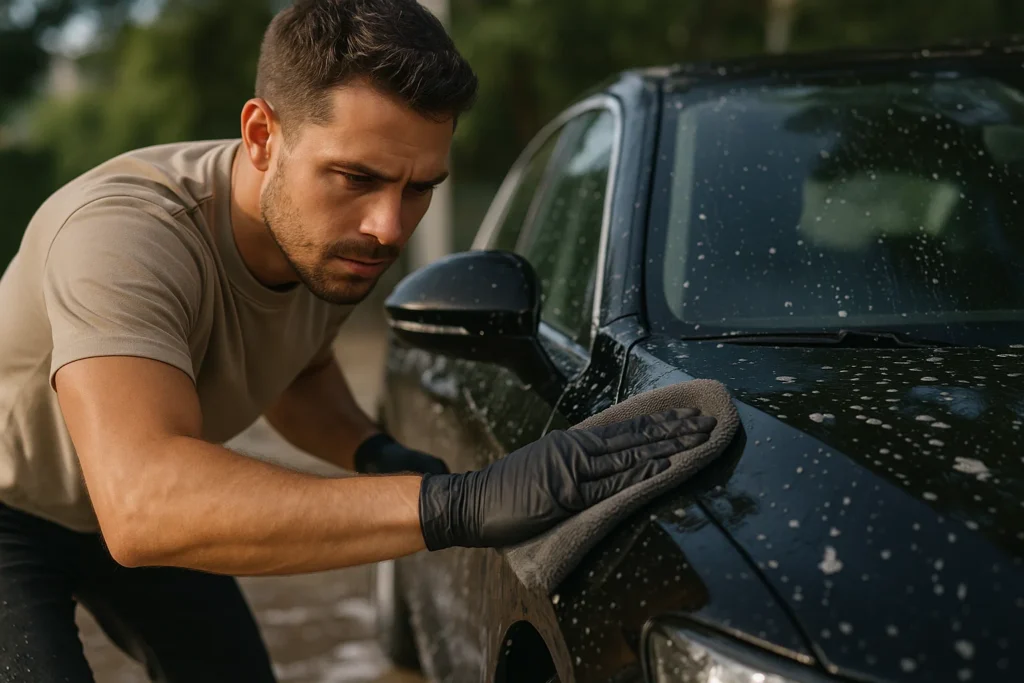
Overlooking Hidden or Hard-to-Reach Areas
Areas that are usually overlooked, like door jams, under seats, air vents, and wheel wells, can become filled with dirt and grime and distract your detailing work. Comprehensive detailing involves taking care of these dark corners to achieve a deep cleaning and overall vehicle freshness.
Rushing Through the Detailing Process
Good detailing requires patience. Dashing causes areas to be missed, shoddy finishing and possible damage due to careless handling. Organize your time to work systematically and allow products time to work and each procedure to be performed properly to achieve the best results.
How Often Should You Detail Your Car?
Most car owners find a professional detailing every three to six months to maintain the fresh appearance of the car. Detailing can be customized to your preferences as well. Depending on the car enthusiast, some detail every month to keep that showroom shine, and others may detail their cars annually with regular washes in between. Finally, the most effective solution is to listen to your car’s condition. Consistent detailing not only enhances aesthetics, but it also preserves your investment, so your vehicle can look and feel new over the years.
Conclusion
Auto detailing is not just about cleaning your car, it’s about maintaining the look and feel of a new car.. It is the process of cleaning the interior of your car from deep down to polishing and protecting the exterior. There are plenty of guides and tips online, and you can find other car lovers who also love detailing.
FAQs
Car detailing is the thorough cleaning, restoring and protecting of a vehicle’s exterior and interior surfaces to a like-new or better condition. It is a process of cleaning every crevice and fixing flaws like swirl marks on the paint.
Why should you detail?
Detailing preserves the appearance of the car, thus preventing early wear and tear, increasing in resale value, and improving comfort as the car is clean and neat both inside and outside.
Although simple detailing may be performed with a few tools and products at home, professional detailers provide expert service, specialized practices, and access to specialized products that provide a better and more lasting result.
This varies depending on your driving style and conditions in the environment but it is recommended that you do it after every 3-6 months to maintain a new look for your car and to ensure that it remains well-protected.

